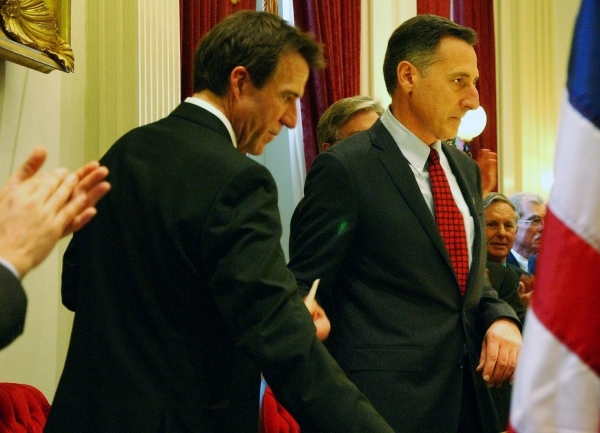PUTNEY — As I travel about my district, I keep getting asked: “How will the Legislature's vote for governor go?” Around the state, apparently, other legislators are hearing the same question.
Here's a bit about that question, and why I'm sharing my choice.
First, some history. Since no candidate received more than 50 percent of the votes, the Legislature will decide who becomes governor.
In this year's election, Governor Peter Shumlin received the most votes, as Jim Douglas did in 2002 when he received 45 percent of the vote. That year, Doug Racine received 42 percent and Con Hogan, 10 percent.
When that vote went to the Legislature, 159, or 91 percent, of the body present voted for Douglas, while 16, or 9 percent, voted for Racine.
That year, Racine urged his supporters in the Legislature to vote for Douglas, as Douglas is now urging legislators to vote for the candidate who received the most votes.
In that same year, Peter Shumlin came in second to Brian Dubie in the race for lieutenant governor. Since no one received more than 50 percent of the votes, that election also was sent to the Legislature. At that time, Sen. Shumlin urged his supporters to vote for Dubie.
This year, as Governor Shumlin won the popular vote, so did Democrats. Voters returned large majorities of Democrats to both bodies of the Legislature.
Republicans who claim that their gains in the recent election demand a “reset” of the legislative agenda might take another look at these numbers that make up the legislature-elect: 104 Democrats and 63 Republicans.
Despite winning nine seats that were traditionally Republican in the House and two more in the Senate, the Republicans' numbers are still only a bit more than 30 percent of the votes in the House and not quite that percentage of the Senate.
Thirty percent of the legislative seats is hardly enough votes to demand a “reset.”
* * *
The governor and returning Democratic majorities have an agenda based on facing the tough problems:
• Recognizing that a key component of moving our economy forward is moving to a single-payer health-care system, which will control costs through payment reform and increase access.
This new approach will affect home budgets, town budgets, school budgets, and budgets for businesses. The old system has failed us and is holding back our economy because of its budgetary stranglehold. It's time to act - and that action includes developing a fair funding system.
• Looking at education as an investment in our future and how best we can afford those investments.
• Protecting vulnerable Vermonters.
That agenda, working with the governor and anyone else who wants to help move Vermont forward, is different from the right-wing agenda currently being proffered by the newly elected Congress in Washington, D.C.
Vermonters did not vote for that kind of gridlock. They voted more in line with the direction in which reasonable Vermonters want to go, as evidenced by the strong majorities returned to the Vermont House and Senate.
Last, but not least, Vermonters in business, politics, and all walks of life want some certainty in their lives, and they want some transparency in how political decisions are made.
They want to know they will be listened to, and they deserve to be.
* * *
With all that in mind, here's my vote and my prediction.
My vote is for Governor Peter Shumlin.
My prediction is that he will be re-elected and that, together, we will continue to make progress on the tough issues facing Vermonters.
